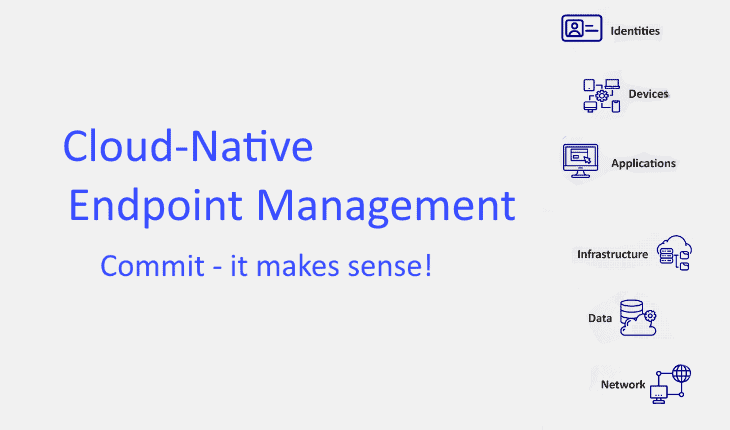Commit to Modern Device Management

Let’s face it, for many customers, the road to modern device management is a journey. Moving from 30+ years of legacy / traditional device management is not only a technical challenge but a cultural one.
I have been talking to customers since the introduction to Windows 10 back in August 2012 (10 years ago as of this writing) and we still have so many customers managing devices in the traditional management ( with images, group policies and device-based targeting app deployment).
Although *many* customers have successfully moved completely to modern device management model where there is no local Active Directory and devices, users and permissions are managed from a cloud-native model, utilizing the full benefits of Microsoft 365 platform, a lot of customers have chosen to go the hybrid-way which Microsoft made possible by allowing hybrid-domain device and co-management.
Organizations with existing Active Directory implementations can benefit from some of the functionality provided by Azure Active Directory (Azure AD) by implementing hybrid Azure AD joined devices. These devices are joined to your on-premises Active Directory and registered with Azure Active Directory.
What is a hybrid Azure AD joined device? | Microsoft Docs
The reason I am writing this post, is because I just saw an tweet from one of Microsoft’s M365 Sr Program Manager pointing to a Microsoft Blog in which they are providing clear guidance to move to cloud-native endpoint device management. which is great!
Interestingly as soon as these customers go through the complexities of a hybrid mode, they realize the complexities of managing two different models and start to actually make plans to phase-out the traditional management model.
There are *many* advantages to a cloud-native model of device management – but I think the most important can be summarized in one word:
Simplicity
What we can do today, the many enhancement introduced over the past couple of years provides significant benefits to end-users and IT administrators which in the end it helps reduce operating costs while providing a much better end-user experience to securely deploy and maintain devices over its life in the field.
Resource:
Planning for cloud-native Windows endpoints and modern management – Microsoft Tech Community



